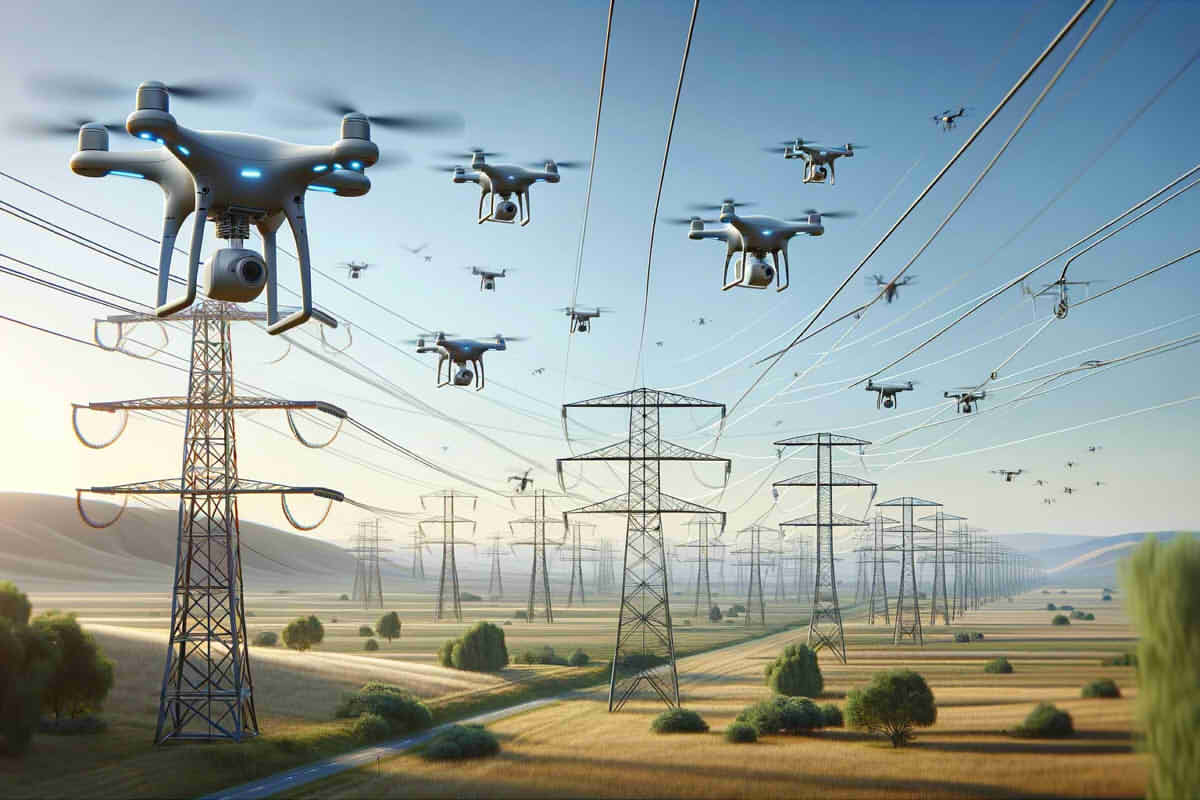With the continued acceleration of the construction of new electrical systems, The use of drones for inspection of power lines has begun to take center stage in the market. Commercial drones seem to have found new application perspectives in this broad market.
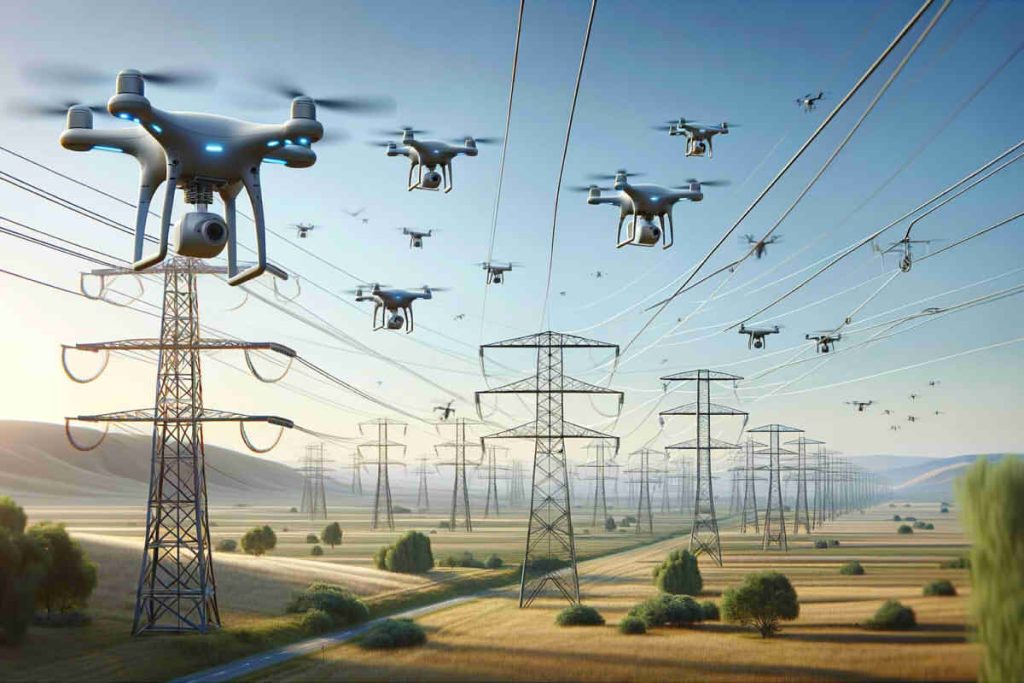
Table of Contents
- Automatic inspection of power lines becomes a big trend
- Pain points in drone energy inspection
- The evolution of drone inspection
- The future of electrical inspection
Automatic inspection of power lines becomes a big trend
In the early stages of drone entry into the field of electrical inspection, There were no shortage of doubts about its efficiency and cost. In areas with good road conditions or clear terrain, drone inspection does not have a big difference in efficiency compared to traditional manual inspection, Its main advantage lies in greater quality and detail in the inspection.
Nevertheless, in remote and mountainous areas, The role of drones for power line inspection has become evident. In the past, Completing an electrical inspection in a mountainous area could take an entire day, Now with the help of drones it can be done in just 20 minutes. Increased efficiency is a significant change for areas where inspection was previously difficult.
Previously, las overhead cable lines They were only repaired after problems occurred. Today, with drone supervision, many problems can be eradicated in their initial phase.
For high voltage lines in harsh outdoor environments, It is difficult for electrical personnel to inspect electricity poles, fuses, transformers, insulator chains and others overhead electrical equipment. All of this can be safely inspected with drones, efficiently gathering information about lines and equipment, quickly locating problem areas, thus achieving an inspection without blind spots.
Drone inspection not only allows inspection work to be completed quickly and accurately in a short period of time, but also prevents the risk of injury from falls to personnel, greatly increasing work efficiency and safety coefficient.
Pain points in drone energy inspection
Today, despite the progress, Drones for power line inspection still face challenges such as battery autonomy and signal transmission.
The autonomy problem requires advances in battery technology, which is difficult to solve in the short term. To solve the wireless signal problem, need to get rid of dependency on wireless signal drivers. By establishing three-dimensional models of power lines and improving databases, drones expected to be able to perform automatic energy inspections, thus changing the current situation where the transmission of wireless signals is obstructed.
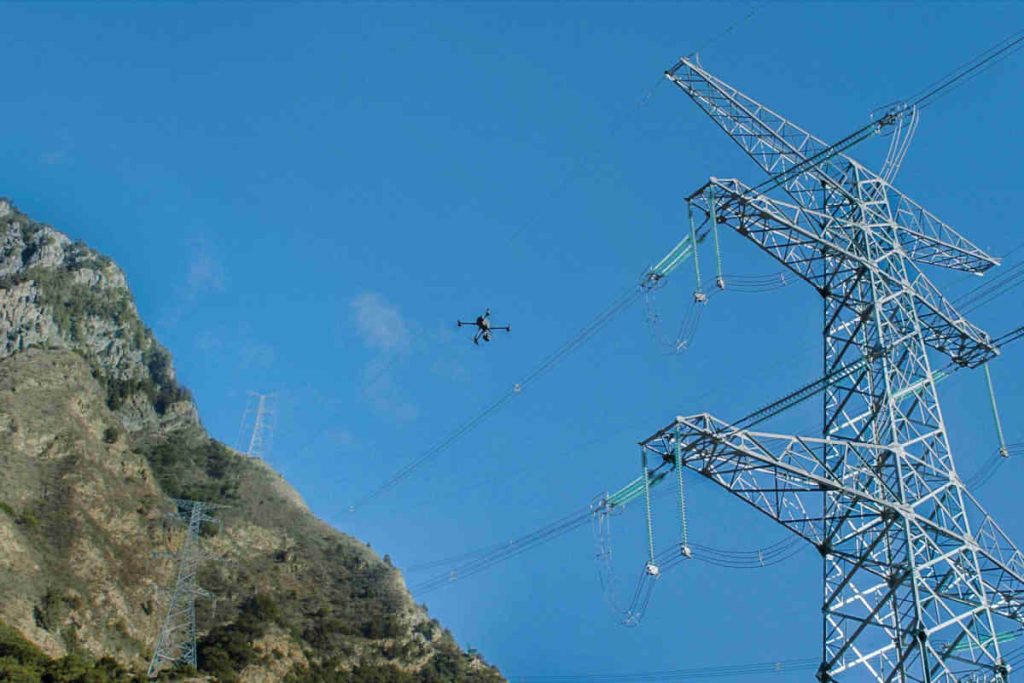
Leapfrog Style Inspection
The coverage radius of traditional drones is only a few 3 kilometres, and the drones must return to their base to recharge after completing their task, which reduces the inspection radius. Using the leap-frog inspection model, that uses consecutive recharges, the inspection radius of a single drone can be exceeded. Drone leapfrog refers to undocking drones from their base, allowing drones to stop and recharge at the nearest base based on task requirements, achieving “a drone, multiple bases”, and supporting continued long-distance and long-range flight operations.
The evolution of drone inspection
Autonomous inspection with drones, using route planning, has achieved point-to-point and point-to-line inspections, not only covering areas that are difficult for humans to reach and improving inspection efficiency, but also significantly reducing the difficulty of operation for personnel and the risk of damage to drones. And traditional drone inspection varies in accuracy and has blind areas due to different operator skill levels and experience.. Autonomous inspection with drones compensates well for these shortcomings of the traditional way, making every inspection more accurate, complete and detailed, significantly reducing staff workload.
Drones automatically take off from the substation, carry out autonomous inspections strictly in accordance with the predetermined inspection area, and complete on-site inspection and photo transmission using infrared imaging and three-angle photography per base and per team. Besides, combining autonomous drone inspection application with AI technology, autonomous risk identification is carried out, forming a line risk database. This mode not only promotes the digital transformation of the Energy Distribution, but also significantly reduces the rate of line failures and stoppages.
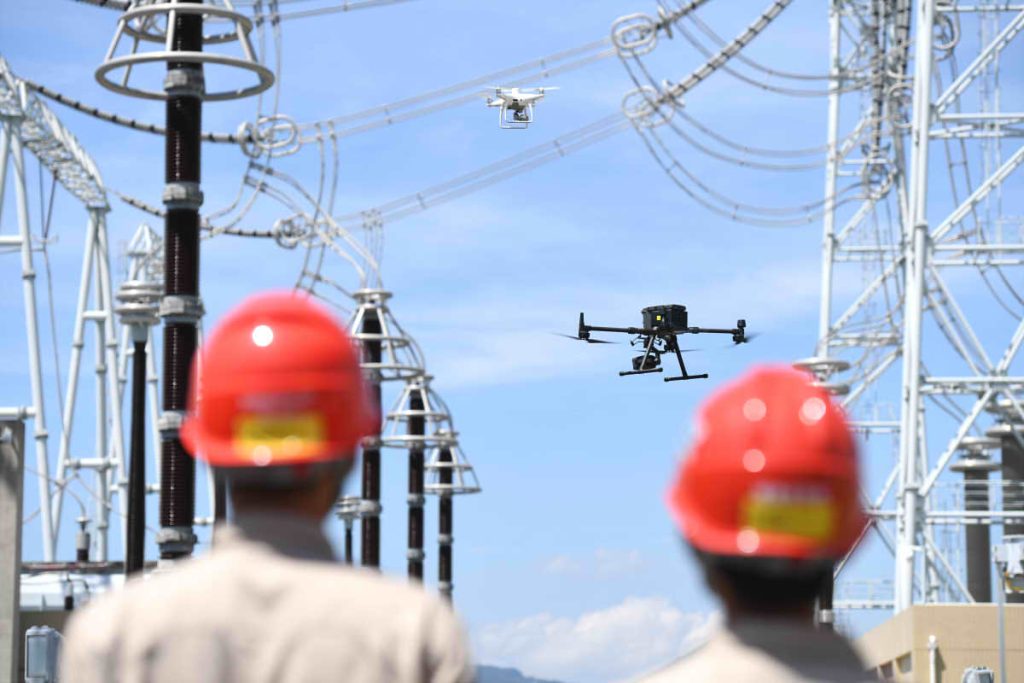
The future of electrical inspection
After passing the initial phase of simple applications, Intelligence and automation in electrical inspection with drones has become the current direction of development in the industry. According to a market research report, It is expected that by the year 2026, Global demand in the market for energy transmission and distribution by drones and smart technologies reaches 13.2 billion dollars. The future of electrical inspection envisions a transformative role for drones for power line inspection, marking an era of efficiency, Improved accuracy and security.
Advances in Autonomy
Drones are expected to become increasingly autonomous, with enhanced real-time decision-making and problem-solving capabilities. The integration of artificial intelligence and machine learning will allow drones to recognize patterns, predict failures before they occur and make critical decisions during inspections, minimizing the need for human intervention.
Integration of New Technologies
The future of electrical inspection will see deeper integration of various technologies:
Battery Capacity Improvement and Alternative Power Solutions: The development of batteries with greater energy density and the exploration of alternative energy sources are anticipated., as hydrogen fuel cells, to extend the flight time of drones.
Improved Communications: Technologies like 5G and, possibly, 6G, will improve real-time data transmission capabilities, allowing faster and more secure transmission of information collected during inspections.
Advanced Detection Technologies: The integration of advanced sensors, such as LIDAR and hyperspectral sensors, will provide more precise and complete details of the infrastructures, allowing not only to detect existing problems but also to predict future failures.
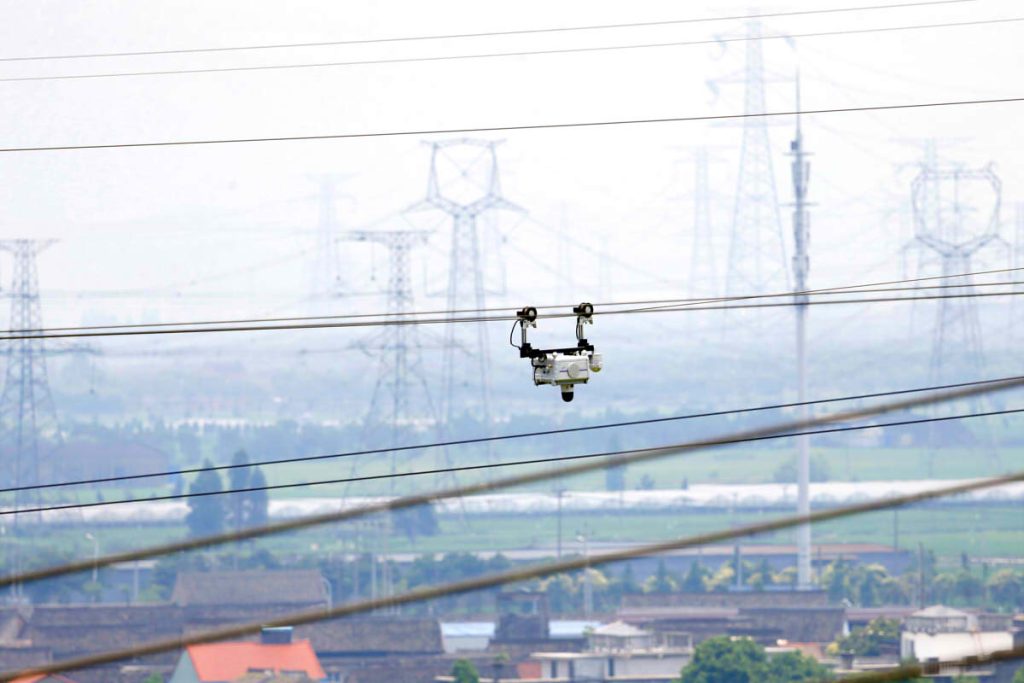
Adaptation to Emerging Challenges
Climate change and extreme weather events present new challenges for electrical infrastructure. Drones are expected to play a crucial role in inspection and preventive maintenance, adapting to difficult environments and providing rapid responses after extreme events to restore services and prevent disasters.
Regulatory Framework and Safety Standards
As technology evolves, so will the regulatory framework. Continued development in drone regulations is anticipated to ensure safe operations and protect privacy and data. Collaboration between regulators, drone manufacturers and electric companies will be key to establishing safety and operational standards.
Integration with Smart Grids
Drone inspection will be further synchronized with smart grid operations. Drones will not only collect data, but they will also interact with the network infrastructure in real time, facilitating more proactive maintenance and faster response to network fluctuations or detected problems.
In conclusion, The future of electrical inspection with drones is marked by innovation and adaptation. With the integration of advanced technologies and a deeper understanding of emerging challenges, The sector is prepared to transform not only the way inspections are carried out, but also the resilience and efficiency of the global electrical infrastructure.

